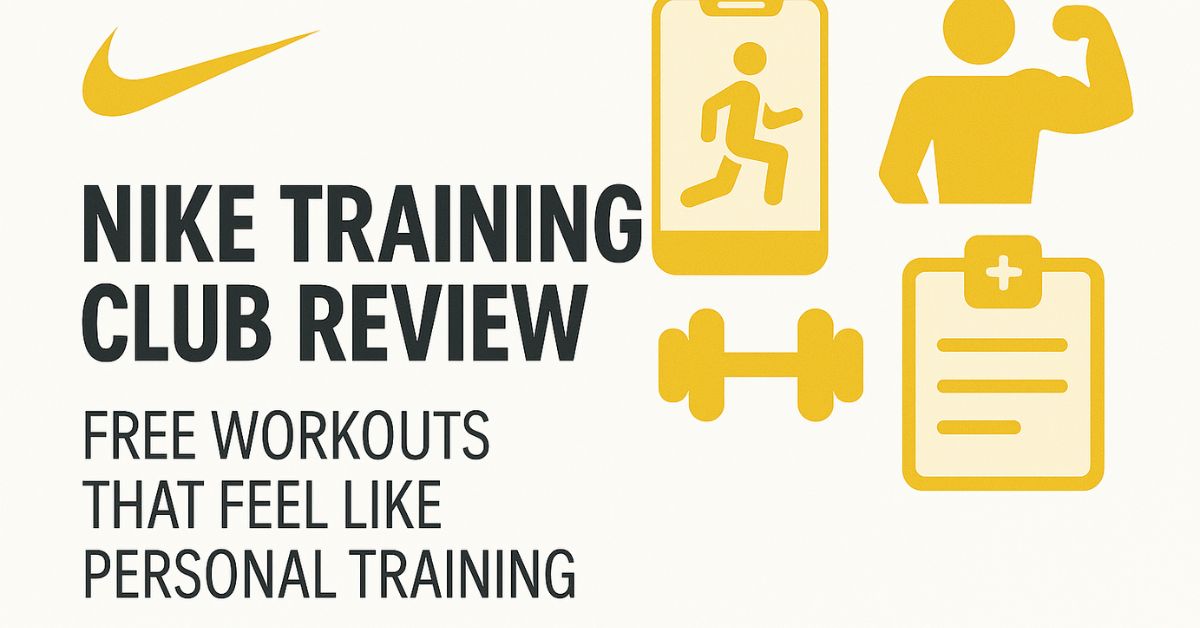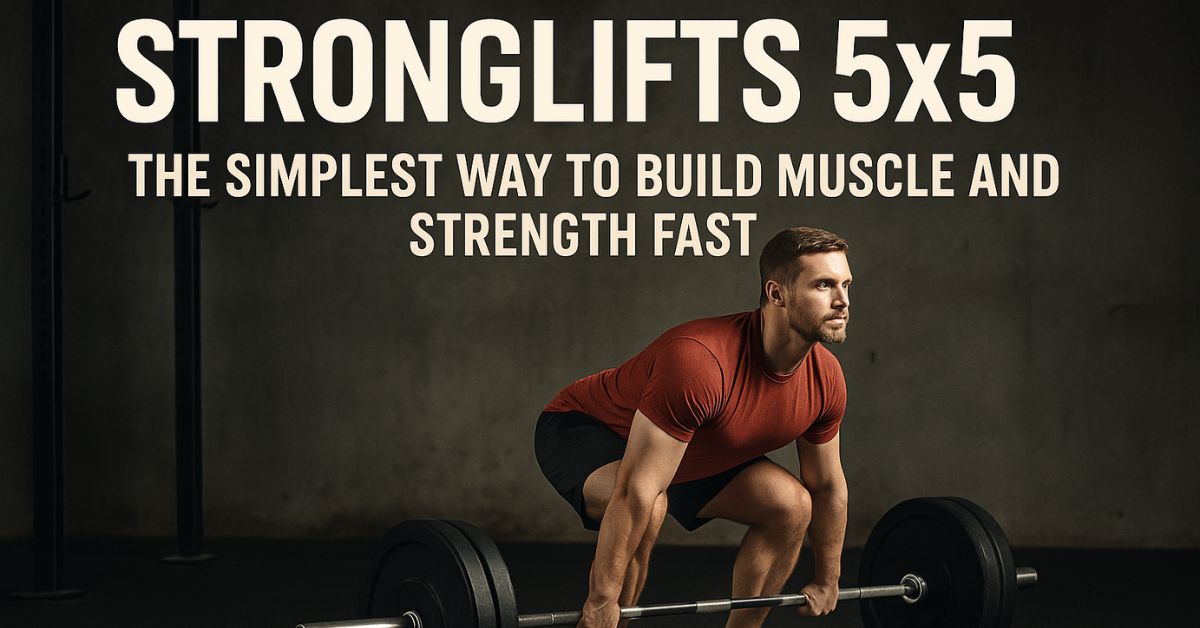If you want high-quality, trainer-led workouts without paying for a premium subscription, Nike Training Club is a standout. You’ll get structured plans, time-efficient sessions (from 5 to 60+ minutes), options for strength, cardio, mobility, and yoga, plus clear form cues that mimic having a coach in the room. It’s not the most data-heavy app and community features are basic, but for cost-free training that actually moves you forward, it’s hard to beat.
What is Nike Training Club?
Nike Training Club (often shortened to NTC) is an all-in-one fitness app available on iOS and Android. It combines follow-along video sessions with audio coaching, written form cues, and progressive programs you can follow for several weeks. The workouts range from beginner-friendly bodyweight routines to advanced strength circuits, mobility resets, and yoga flows. Importantly, the app is free, which makes it a compelling entry point for anyone who wants structured, professional-quality guidance without subscriptions.
Why NTC feels like personal training (even though it’s free)
1) Clear, actionable form cues.
Throughout the sessions, coaches call out the points that actually matter—neutral spine, bracing the core, knee tracking, shoulder positioning, and helpful regressions if a movement is too spicy. That “in-set” coaching is what turns a video into a training session.
2) Progressions and regressions.
Many workouts recommend swaps (e.g., bodyweight squat instead of goblet squat) and offer ways to make exercises harder (e.g., tempo changes, pauses, elevated heels). This personalization is hallmark personal-training territory.
3) Programs with intent.
NTC’s multi-week plans are arranged to alternate training stress and recovery, so you’re not just smashing the same muscle groups daily. Expect split days (e.g., full-body strength + mobility) and rest days built in.
4) Time-smart training.
Sessions are sorted by duration (5–20, 20–40, 40+ minutes), so it’s easy to slot a workout into a lunch break or a busy evening. Many plans include short “finishers” for conditioning without bloating the schedule.
5) Minimal gear options.
You can do a lot with bodyweight and a pair of dumbbells. NTC accounts for living-room realities—limited space and minimal equipment—while still making you sweat.
Key features at a glance
- Workout library: Strength, HIIT/conditioning, mobility, core, yoga, and recovery.
- Programs: Multi-week tracks for beginners, fat-loss/conditioning, strength focus, or mobility.
- Coaching: Video + voice guidance with set timers, rep targets, rest intervals, and technique tips.
- Filters: Muscle group, goals, equipment, level, and duration.
- Tracking: Basic logs for completed sessions and streaks; integrates with phone health data on supported devices.
- On-demand & plan-based: Jump into a single workout or commit to a plan with 3–5 days per week.
- Warm-ups & cooldowns: Many sessions package joint prep and recovery into the workout.
Who is it best for?
- Beginners who want free, credible guidance and guardrails against bad form.
- Busy professionals who need short, effective sessions with minimal setup.
- Home and travel workouts with limited equipment.
- Lapsed lifters easing back into training with structured, progressive plans.
- Cross-training athletes seeking mobility, core, or conditioning add-ons to sport practice.
If you’re a data-driven athlete who wants advanced periodization knobs, deep metrics, or barbell-specific programming, you may eventually outgrow NTC—or use it alongside a more specialized strength app.
Setup and onboarding
- Download and create a profile. Choose goals like “Get stronger,” “Build endurance,” or “Improve mobility.”
- Select starting level and equipment. Tell the app what you have (bodyweight, dumbbells, bands, etc.).
- Pick a plan (optional). You can start a multi-week program or try a few standalone workouts to find your groove.
- Schedule your week. The app nudges you to choose training days/times to build a habit.
- Enable reminders and health permissions. This allows tracking of active minutes and completed sessions.
Workout quality: what it’s like inside a session
A typical NTC workout opens with a warm-up (dynamic mobility—hip openers, thoracic rotations, glute activation), followed by blocks or circuits that alternate movement patterns: hinge/squat pushes and pulls, anti-rotation core, then a finisher (EMOM, AMRAP, or short intervals). The coaching style is direct and practical: “Drive through your mid-foot,” “Brace before you hinge,” “Exhale as you press.” You’ll also get pacing and breathing cues to reduce junk reps.
What stands out is the combination of tempo suggestions (e.g., 3-1-X), range-of-motion priorities (depth without losing tension), and common-mistake callouts. That’s exactly what a personal trainer would do—correct in real time and keep you honest.
Programs: structured paths for real progress
NTC’s programs usually run 4–6 weeks, 3–5 days per week. Expect a blend of:
- Strength days: Compound lifts (squats, lunges, presses, rows), often with supersets or circuits.
- Conditioning days: Intervals, plyometrics (optional progressions), and work:rest structure.
- Mobility/recovery: Low-intensity sessions focused on tissue quality, breathing, and range of motion.
They’re progressive: volume or difficulty increases week to week, with deloads or mobility sprinkled in so you don’t fry your CNS (or your enthusiasm).
Modalities covered
- Strength training: Dumbbells, kettlebell-style movements (often doable with a single dumbbell), bodyweight variations; good coaching on form.
- Conditioning/HIIT: Intervals with clear timing, built-in rest, and movement substitutions if plyo isn’t your jam.
- Mobility & recovery: Short sessions for hips, shoulders, and spine; great on off days.
- Yoga: Flows for balance, flexibility, and breath—helpful for lifters who need mobility without losing stability.
Equipment & space
You can start with bodyweight only. If you add a pair of adjustable dumbbells (or two pairs: light and moderate), NTC unlocks more progressive strength options. A yoga mat, mini-band, and door anchor are nice but optional. Space-wise, a small living room is enough.
Tracking, integrations, and accountability
NTC focuses on habit-building over numbers. Expect streaks, completion logs, and time-in-workout rather than advanced strength analytics. If you’re on a compatible device, you can log active minutes and sync basic stats to your phone’s health hub. The upside: you stay present; the downside: it’s not a data geek’s paradise. Pairing NTC with a notes app or spreadsheet is an easy workaround for tracking loads and reps over time.
User experience and design
The interface is clean and minimal: bold tiles, clear timers, and big movement demos. Filters make it easy to find “20–30 minutes, dumbbells, full body, intermediate.” The video production is crisp; coaches demonstrate scaled options; transitions are smooth. Importantly, rest and work periods are obvious—even mid-sweat you won’t be squinting at your phone.
Pros and cons
Pros
- Truly free access to high-quality, trainer-led workouts.
- Strong coaching cues and technique focus.
- Structured programs with built-in recovery.
- Great variety (strength, HIIT, yoga, mobility).
- Minimal equipment friendly; perfect for home and travel.
- Time-efficient sessions and filters by duration.
Cons
- Basic data tracking; no advanced periodization controls.
- Community features are light compared to social-first apps.
- If you want barbell programming or powerlifting-specific cycles, you’ll need a second app or your own plan.
NTC vs popular alternatives (quick comparison)
| App | Price Tier | Best For | Standout Strength |
|---|---|---|---|
| Nike Training Club | Free | Beginner–intermediate; home workouts | Coaching cues + structured free programs |
| FitOn | Mostly free | Casual exercisers | Massive library and social/community feel |
| adidas Training | Free + paid | Bodyweight focus | Minimal-equipment calisthenics |
| Peloton App | Paid (trial available) | All-rounders w/ live energy | Live classes + cycling/tread + music vibe |
| Freeletics | Paid | HIIT/AI plans | Intense bodyweight conditioning |
Note: Pricing and features can change; this snapshot focuses on typical positioning.
How to get results with NTC (5 practical tips)
- Pick a program, not random workouts. Programs stack stress logically—this is where progress happens.
- Log your loads. Keep a simple note of weights/reps so you can progress week to week.
- Master form first. Use NTC regressions; chase range and control before load or speed.
- Cap intensity at 8/10 most days. Leave one or two reps “in the tank” to stay consistent and avoid burnout.
- Schedule mobility. Two 10–15 minute mobility sessions per week will improve your positions and recovery.
Sample 7-day NTC template (no gym required)
- Day 1 – Strength (Full Body): 35–45 mins. Squat pattern + push + pull.
- Day 2 – Conditioning: 20–25 mins. Intervals (e.g., 40s work / 20s rest) with low-impact options.
- Day 3 – Mobility/Yoga: 15–30 mins. Hips, T-spine, and shoulder flow.
- Day 4 – Strength (Lower-Emphasis): 30–40 mins. Lunges, hinges, core anti-rotation.
- Day 5 – Active Recovery: 10–20 mins. Walk + short mobility reset.
- Day 6 – Strength (Upper-Emphasis): 30–40 mins. Horizontal/vertical press + rows; finish with core.
- Day 7 – Optional Conditioning or Rest: Keep it light: EMOM or steady-state cardio.
Repeat for 4–6 weeks, nudging weights, tempo, or range up slightly each week.
Is NTC good for beginners?
Yes. It’s built with scalable progressions and clear demos. Start with bodyweight sessions, learn the mechanics, then add small loads. Pick shorter durations first and extend as your work capacity improves.
Is it good for intermediate or advanced lifters?
For intermediates, absolutely—especially if your goal is general strength, conditioning, and mobility. Advanced lifters may use NTC as a conditioning/mobility adjunct while running a separate barbell plan for maximal strength.
Can you build muscle with NTC?
Yes—especially if you lift progressively (more load, more reps, or more challenging tempos over time), eat enough protein, and sleep well. The app’s strength days include compound moves and accessories that can drive hypertrophy when you push close to technical failure with good form.
Does NTC require equipment?
No, but a pair of dumbbells makes a big difference for strength progression. Many sessions offer bodyweight alternatives for all major movements.
Who shouldn’t rely on NTC alone?
- Powerlifters/Olympic lifters chasing peak numbers.
- Data-driven athletes who need granular load management and lift analytics.
- Anyone whose sport demands very specific energy-system training beyond general conditioning.
Use NTC for accessibility, variety, and coaching quality; use niche tools for niche goals.
FAQs
Is Nike Training Club really free?
Yes—the core workout library and programs are free to use. (Availability of features can change by region or version.)
How long are the workouts?
You’ll find everything from 5-minute mobility resets to 45–60 minute strength sessions, with plenty in between.
Do I need Wi-Fi?
Most sessions are video-based, so a reliable connection helps. You can prep by previewing movements if your signal is spotty.
Can I lose weight with NTC?
NTC provides the training side (strength + conditioning). For fat loss, pair consistent training with a calorie-appropriate diet and adequate sleep.
Does it sync with wearables?
It offers basic sync with your device’s health hub on supported phones; for deep metrics, track lifts separately.
Verdict: A top-tier free training app that respects your time
Nike Training Club nails the fundamentals: good coaching, smart structure, and varied modalities—all without a subscription. If you’re building a training habit, returning from a long layoff, or maintaining fitness with minimal gear, NTC delivers workouts that feel like personal training minus the price. For athletes who crave detailed analytics or barbell-specific cycles, pair NTC with a specialty program. For everyone else, it’s a no-brainer download.
Quick start checklist
- Download the app and select a 4–6 week program.
- Set three training days you can protect.
- Start with bodyweight + light dumbbells.
- Log loads and progress gradually each week.
- Add two short mobility sessions for resilience.


